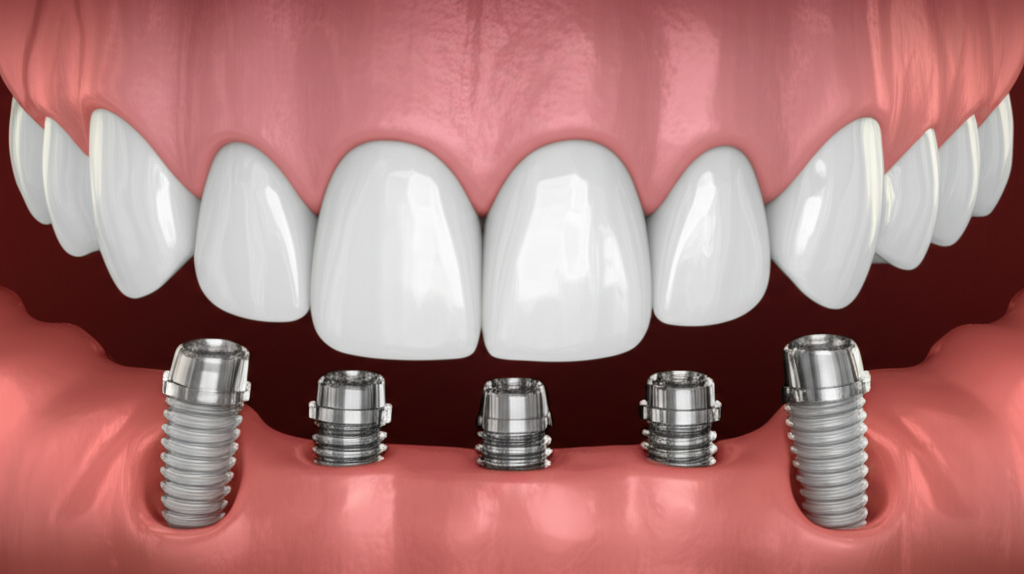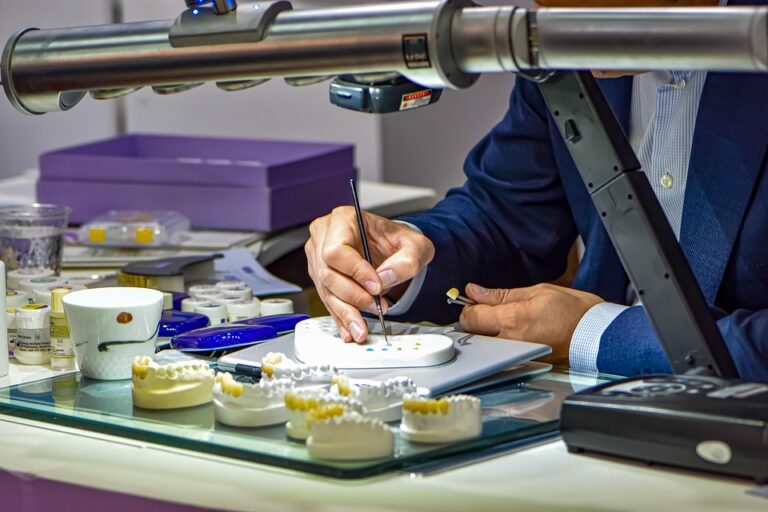
How Many Dental Implants Can You Have? My Honest, In-Depth Guide
Table of Contents
- Missing Teeth: The Tooth-to-Implant Equation
- Jawbone Health: The Foundation for Success
- Oral and General Health: The Success Ingredients
- Restoration Options: Fixed or Removable?
- Anatomical Limits: What Your Mouth Tells You
- A Single Tooth: One and Done
- Multiple Teeth: Bridges and the Magic of Fewer Implants
- Full Arches (Upper or Lower): Full Restoration, Fewer Implants
Outline Overview
Here’s how I’m going to help you with this big question:
- I’ll start with a simple introduction about why you can’t find a one-size-fits-all answer.
- Next, I’ll explain the personal things that decide how many dental implants you need—using real stories and the science behind it.
- I’ll walk you through the most common situations, from fixing one tooth to giving you a complete set of new teeth.
- After that, I’ll tackle the “maximum” question everyone asks.
- I’ll tell you why a dentist’s opinion is so important, not just guessing.
- I’ll finish up by answering questions I hear the most and help you figure out your next steps.
Introduction: Why There’s No Simple Number
I remember the first time someone asked, “How many dental implants can you actually get?” I wanted an easy answer! Maybe you feel the same. You want a number, maybe a sure thing. Honestly, I get it. Losing teeth is about more than just not chewing right—it can hit your confidence and how comfortable you feel every day.
But here’s what I’ve learned after years around patients and dentists: There’s no one answer. The “right” number depends on what you need. Sometimes, one implant does the job. Sometimes, you need a handful of implants for a full new smile. The answer always comes down to your goals, your health, and what your mouth is like.
Let’s talk about that together, step by step.
The Key Factors That Determine How Many Dental Implants You Can Get
Missing Teeth: The Tooth-to-Implant Equation
Let’s keep it simple. If you’re missing just one tooth, you usually need one dental implant. Easy, right? That “one-on-one” method really works for single gaps.
But if you’re missing a few teeth in a row, you don’t need an implant for every missing one—which saves your mouth and your bank account. Instead, your dentist might suggest an implant bridge. That means two implants can support a bridge for three or four missing teeth.
If you’ve lost most or all of your teeth, don’t freak out… You don’t need a “metal jaw.” Modern plans use just as many implants as needed, spaced out to do the job. I’ll talk more about that when we get to “All-on-4” and “All-on-6” later.
Just saying: I’ve seen people come in scared they’d need 14 implants per jaw. They leave surprised that four or six is often enough for a whole new smile.
Jawbone Health: The Foundation for Success
Here’s the truth—no bone means no implant. Your jawbone is like soil, and your implant is like a seed. Strong, healthy bone lets that implant “take hold” in a process called osseointegration. If you don’t have enough bone, implants won’t stay put and might fail.
If your teeth have been gone for a while, your bone might have shrunk (this is called bone atrophy). In that case, you might need a bone graft or a sinus lift before getting implants. These extra steps can make it take longer—but help your results last for the long run.
Once, my friend had very thin bone up top. Her dentist suggested special implants higher up in her cheekbone, not regular ones. It’s cool what dental experts can do to work with what you’ve got.
Oral and General Health: The Success Ingredients
You can’t talk implants without talking about your health. If you have bad gum disease, sugar problems (like diabetes that isn’t under control), or other big health problems, you’re not a great choice for implants—at least not until those things are handled. Even smoking makes implants much less likely to work out.
But don’t lose hope. Some people with health problems still get implants with extra care and planning. The trick is being honest about your health and working with a team that looks at the big picture.
Restoration Options: Fixed or Removable?
Do you want new teeth you never take out? Or would you rather have removable ones you can clean more? This isn’t just about taste. Some fake teeth need fewer implants. Some, like a fixed bridge for heavy chewing, might need more.
For example, I’ve met folks who switched from regular dentures to implant dentures with just two to four implants per jaw. The difference in comfort and staying power is huge, and the cost isn’t so bad.
Anatomical Limits: What Your Mouth Tells You
Your teeth don’t float all alone. Below the gums, you’ve got sinuses up top, nerves down below, and different bone shapes and sizes.
I’ve seen dentists plan implant spots with special 3D scans, working around these things. They’ll never put an implant where it’ll fail, hurt, or hit a nerve. You always need a good plan.
Common Scenarios and How Many Implants They Need
Let’s look at what all this means with real examples.
A Single Tooth: One and Done
If you lost just one tooth from an accident or decay, you’ll just need one implant. That implant gets a crown on top—usually made at a dental ceramics lab to blend in with your real teeth.
Multiple Teeth: Bridges and the Magic of Fewer Implants
If you’re missing three teeth in a row, you might think you’ll need three implants. But it’s common to use just two—one at each end—to support a “bridge” for three (or more) teeth. Sometimes, for stability, a third implant may be used, but you don’t always need it.
If you’re missing scattered teeth, each spot gets checked. Sometimes you can join nearby gaps with a bridge; other times, single implants spaced out are better.
Full Arches (Upper or Lower): Full Restoration, Fewer Implants
Here’s where dental implants get really smart. If you’ve lost all teeth on your top or bottom jaw, you don’t need one implant for every tooth. Most answers use just 4 to 6 (sometimes 8) implants in the right spots.
All-on-4® Implants
This way uses four implants to hold up a whole arch of new teeth. Two go straight up front, and two are tilted toward the back for the best grip. It works really well for people missing bone from having no teeth for a while.
All-on-4 is a brand name, but the idea isn’t limited to one company. I’ve seen this method change lives by skipping lots of extra bone grafts.
All-on-6® and Up
Sometimes the upper jaw needs more support, since the bone is a bit softer. That’s where six implants help, spreading the chewing force and keeping things steady a long time.
Implant-supported Overdentures
If you want teeth that come out to clean, two to four implants per jaw will hold your denture tight. Compared to loose old dentures, it’s a giant difference—I’ve seen people go from hiding their smile to lighting up the room.
Full Arch Fixed Hybrid Dentures/Bridges
For the strongest, most real feeling, some people get 6-8 implants per jaw. This is just about as close as you can get to real teeth, for looks and for use. These cases take a team—usually a dentist, a surgeon, and techs from a full arch dental lab.
Is There a Maximum Number of Dental Implants? The Real Answer
People ask: Can I get 32 implants? Technically, yes—if every adult tooth is gone and you have lots of bone, perfect health, and an endless budget.
But dental work isn’t about “more is better.” Most times, fewer implants in the right spots will give you the same—or better—results with less cost, less surgery, and less trouble. The limits are your mouth size, your bone, your health, and the type of fake teeth you want.
Experts in digital dental lab use 3D scans to plan just where—and how many—implants fit you best. In fact, having a mouth full of metal posts can make it crowded and hard to clean.
What I learned is simple: The highest number isn’t fixed. It’s the best and safest number for you.
The Power of a Professional Dental Assessment
No amount of searching online (or reading articles like this) can replace a dentist seeing you in real life. Before getting any implants, your dentist or oral surgeon needs to check your mouth, talk about your health, and take special X-rays or 3D scans.
That information lets the dental team make a plan just for you: how many implants, what kind of fake teeth, what extra steps you might need, and how long it’ll all take. Sometimes, you’ll need to get your gums healthy or your bone stronger. Sometimes, you can get started right away.
I always suggest working with clinics or labs that are known for being open and skilled. An implant dental laboratory has lots of experience working with dentists, making sure your implants fit your mouth and your life.
FAQs: Your Dental Implant Questions, Answered
Can anyone get dental implants?
Not everyone. You need healthy bone, good mouth care, and stable health. Gum disease or serious health issues can be a problem.
If I’m missing all my teeth, do I need an implant for every tooth?
Almost never. Most full-mouth options use 4-6 implants to support a whole set of new teeth.
Do implants hurt?
Most people are okay. The dentist numbs the area so you don’t feel pain during surgery. Some soreness after is normal, but it usually doesn’t last.
What if I have too little bone?
Bone grafts, sinus lifts, or special implants can rebuild or go around thin bone. You’ll just need more time and planning.
Are implants covered by insurance?
It’s different for everyone. Some plans pay for part of it. I tell people to always check their plan first.
How long do implants last?
With good care—brushing, flossing, dentist checkups—implants usually last many years, sometimes longer than your old teeth!
Can health problems stop me from getting implants?
Big issues (like uncontrolled diabetes, active cancer treatment, or immune system problems) might stop you, at least for now. But lots of people with managed health problems still get implants, so don’t rule yourself out.
For more about dental health and common risks, take a look at:
Conclusion: Charting Your Path to a Restored Smile
To go back to that big question: “How many dental implants can you have?” My real answer, after seeing so many people get their smiles back, is this: there’s no perfect number. It always depends on your goals, your health, your mouth, and your dental team.
Some folks need just one tooth fixed. Others need a whole new smile. Everyone starts with a plan made just for them.
If you’re thinking about implants, start with a full checkup. Ask every question you have. Look at your bone, your bite, your goals for the future. Then work with an experienced team to get teeth that fit your life.
I’ve seen dental implants help people get back their smile, their talking, and their favorite foods. That’s really what the “right number” means.
Ready to start your own journey? Get informed, get checked, and get your smile back.
For more about new teeth choices, dental tech, and the science behind smiles, check out:
Stay curious, stay confident, and don’t wait to get your smile back—one implant at a time.








